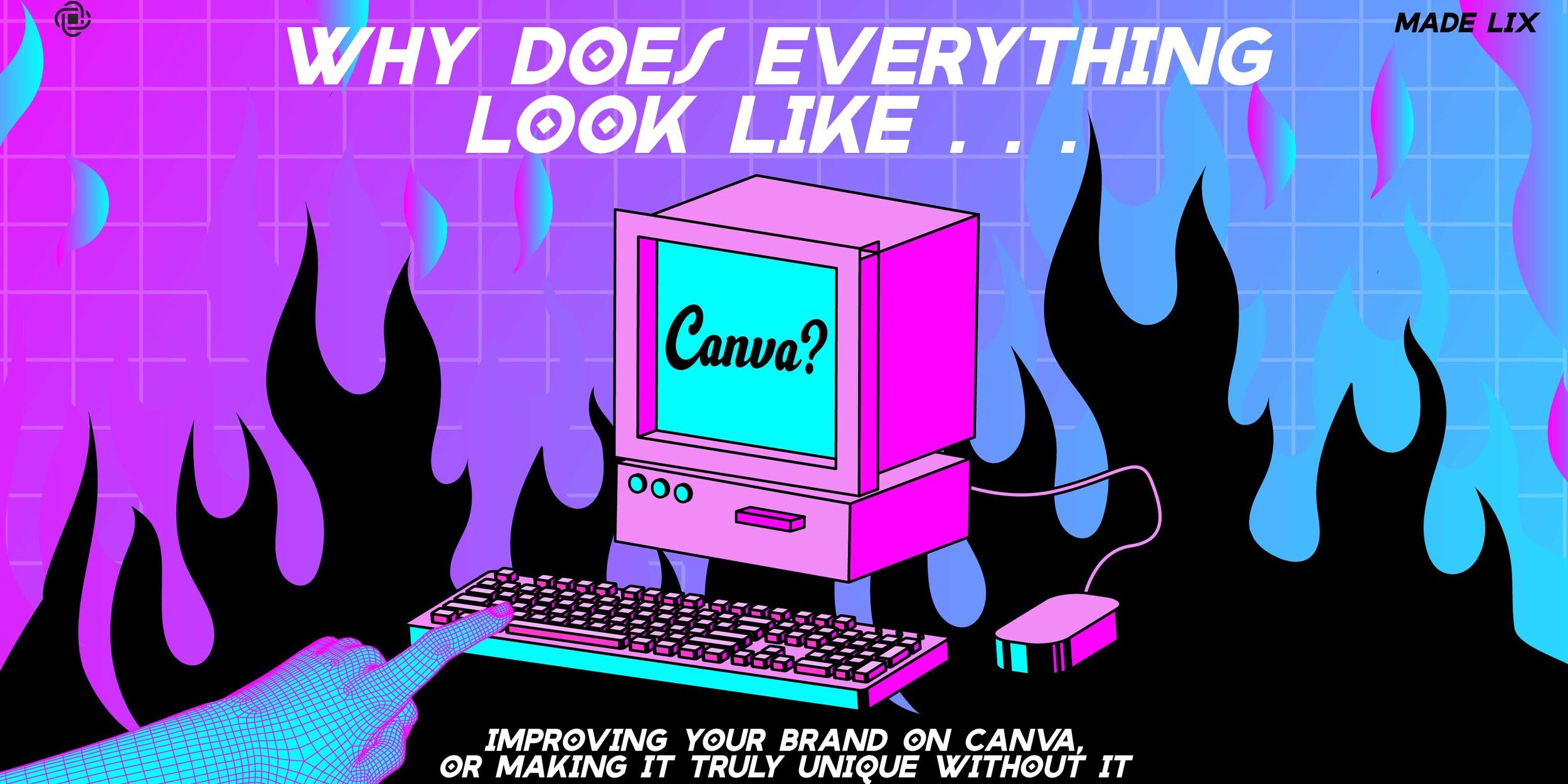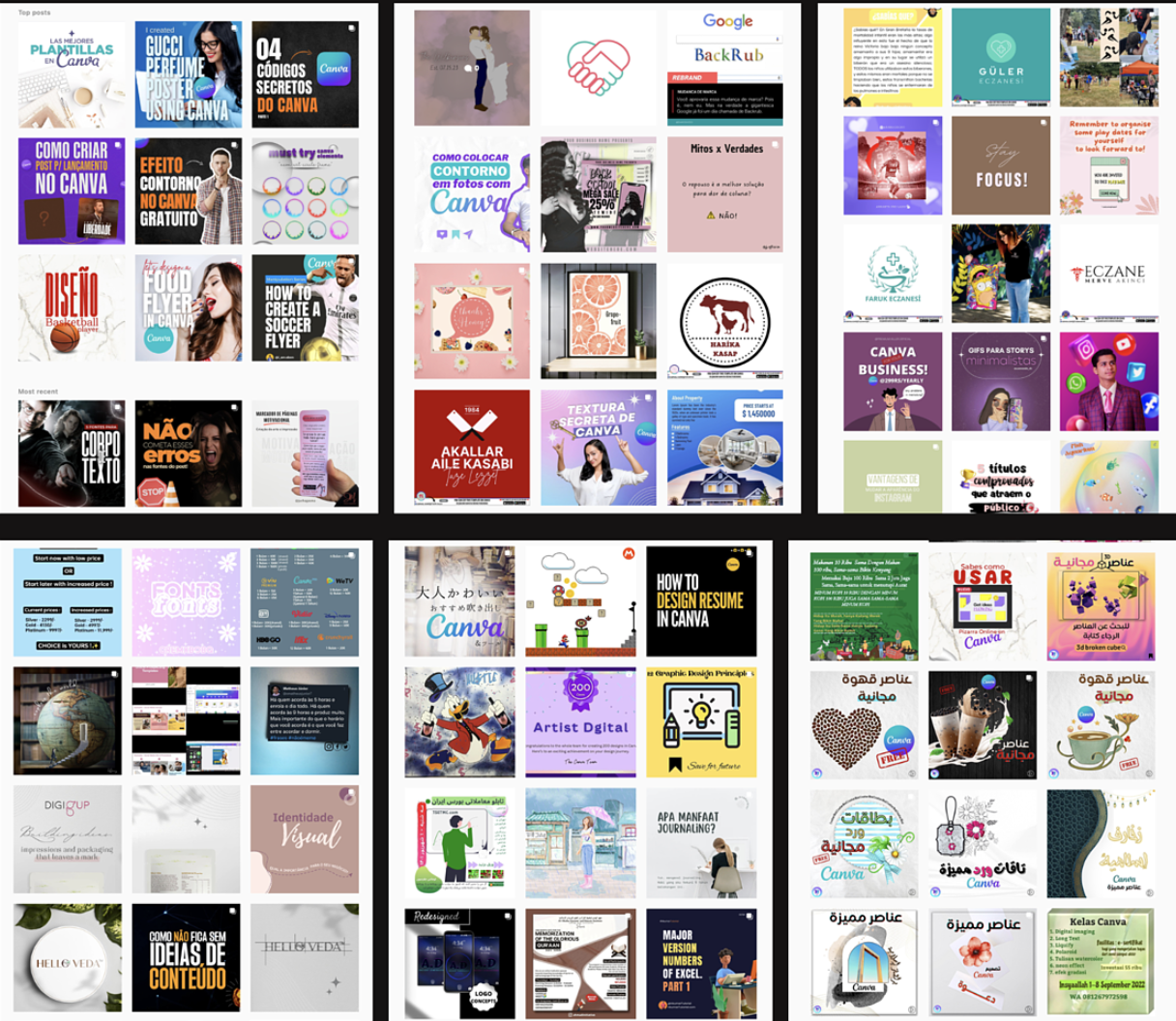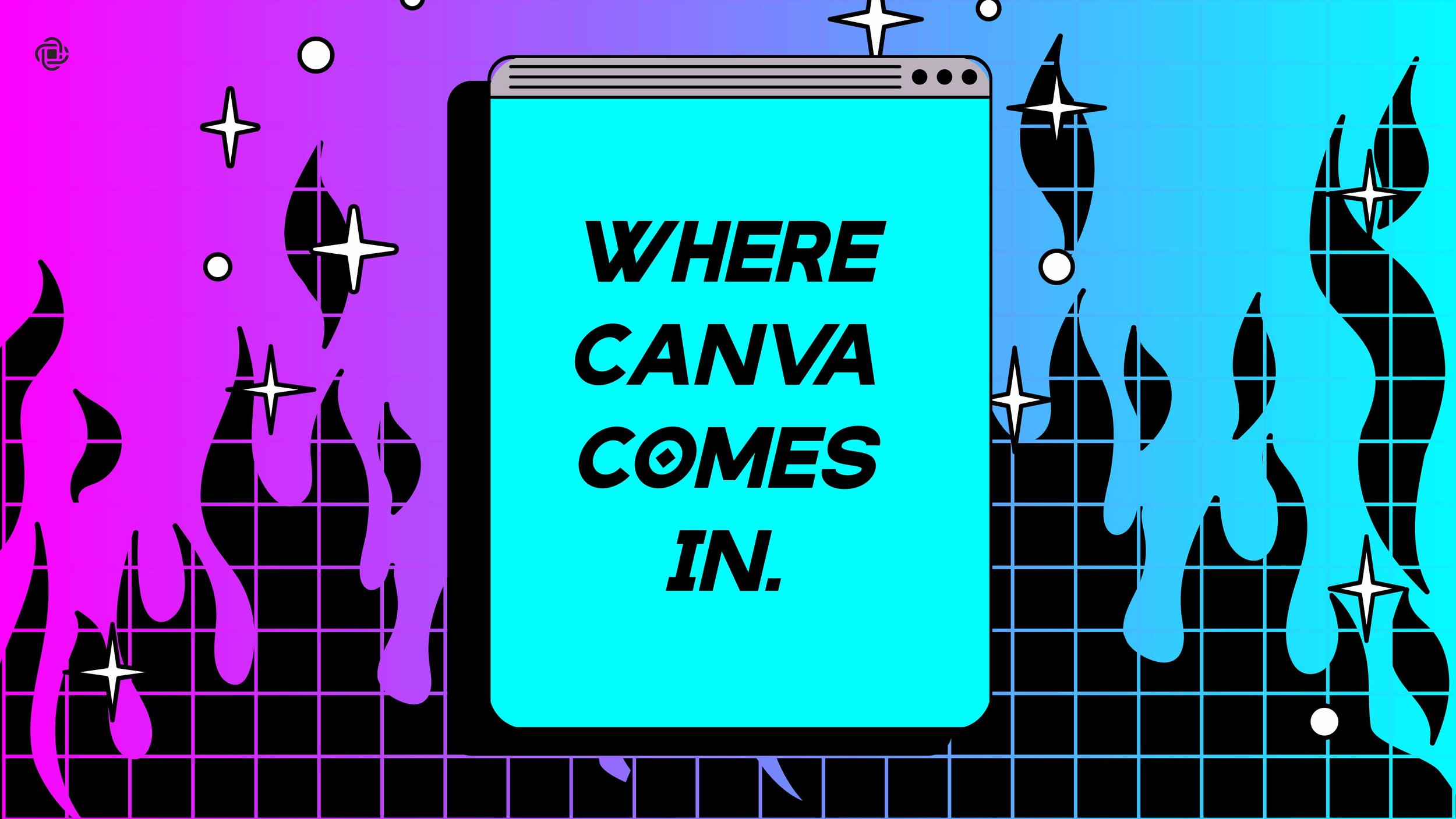If you’re not a designer or familiar with the marketing design zeitgeist from the last 5 years, you may not know what Canva IS. But you most likely know what its results look like.
Behold…Canva templates.
Since 2012 when it first appeared on the scene, Canva has been in the business of making design accessible to the masses – including those with little to no design experience. Remember the way Microsoft sought to help anyone write and add design elements to their documents? Clipart? The memories.
Well, Canva aimed to do the same with design for brands, content, and marketing.
Enter the small to middle market businesses. Over the past few years, Canva has become increasingly popular – especially with entrepreneurs who can’t afford design teams, or designers working for or with brands that have tight budgetary, time, and resource constraints. For a business world that often needs to do more with less, Canva feels like a windfall.
But is it one?
The answer is…probably not. This may be unpopular, but we actually have some pretty serious issues with Canva and its proliferation. And it starts with this…
A cursory glance at the designs above tells numerous, generic, undifferentiated stories. And you know who tells those kinds of stories? Generic, undifferentiated brands. (Now we know that’s not always true, but remember that in the world of brands, every book is judged by its cover.)
Let’s try an exercise:
Without scrolling back up, try to recall 5 of the designs you saw above. Or even better, the brands they were advertising for.
We’ll wait.
What you may remember is chunky text, basic stock illustrations, and bright, warm palettes that are reminiscent of the inside of every Hallmark Store ever.
Canva may be convenient and frugal. But it has also become the representation of many a brand’s journey – mirroring the trend from creative and differentiated to easy and generic.
Easy Does-n’t It
The growing challenge in the emerging economy is for business leaders in the middle market to squeeze every last bit of potential out of their budgets. We see this concern with almost every leader we meet and work with. And we understand the current reality: recession-like qualities abound in the market. Inflation looms. Layoffs are happening. It’s harder out there than ever before.
As if on cue, tech companies keep appearing to ease the CEO’s burdens. Need better marketing tools? A simplified marketing email? More content creation? Better SEO?
New and Big Tech has the answer. With endless ways to automate and increase output, while streamlining user effort, tech companies know that the easier they make things, the more effective those solutions will look.
And if the goal is to create brand and marketing assets that look like everyone else’s, then consider Canva just another effective tech tool.
The issue is that brands in today’s middle market need more than just existence. They need more than to just be online or be content creators or send cold marketing emails.
This needing more has left many leaders with a sense of needing to do more.
This sleight of phrase is how big tech solutions keep making their money off of middle-market business owners. And the businesses themselves? They get trapped in a loop of having to do more ad nauseam and buying more technology to do it.
Enter Canva. A technology solution to a digital problem created by, yeah, technology. See the loop?
To thrive here and now, in this economy, brands and their leaders must stop the endless attempts at “doing more with less”. We see this sentiment as little more than a thinly veiled rebrand of hustle culture.
The solution to a CEO’s need is almost never “do more.” Or faster. Or easier. Or Canva. The solution…
Is different.
Where Canva Comes In
It would take a highly skilled designer to make a truly differentiated brand using Canva. But a highly skilled designer would not choose to work within the constraints of Canva to make a brand. How do we know? We asked one of our designers, who works on our team, Moriah Manford, about it.
Here’s what Mo said:
“The main problem with Canva is achieving differentiation. Canva gives you a lot of templates, with some customization options. But it’s honestly not enough. You’ll never be starting from scratch, you’ll never use a color or design elements or a combination of elements that someone else hasn’t used before.”
Though she is of course describing Canva, Mo could be talking about any number of big tech solutions we’ve seen over the past few years. Fast, easy, and exceptionally generic.
Where a program like Canva shines, Mo explains, is when a brand already has a highly differentiated design and elements and then brings that brand kit to play in Canva. Canva is the magnifier of differentiated brands, not the creator of them.
This is going to sound so simple that it could be easily missed – so we want to draw a little attention here before we say it:
Differentiation is the key to winning the middle market.
The First Thing A Brand Should Do – Be Different
Surprise, this is not a piece about Canva, it’s all been a ruse to get you to this very moment where we implore you, plead with you, before you buy another piece of software or technology, to stop and consider: What, if anything, truly makes our brand different, and does it show?
No piece of technology or software, no sales or marketing gimmick, no amount of rebranding can save an undifferentiated brand.
If you’re not sure what makes your brand different, or how to introduce differentiation into your brand, we have a couple ideas for you to check out.
Our founder, Nick Richtsmeier recently published his Masterclass: The Growth Trap. In it, he helps leaders and CEOs recognize the pitfalls and traps of the late-stage digital marketing landscape and shows them what to do to get their brands back on track.
If you’re ready to roll up your sleeves, CultureCraft’s fall strategy sprint, Grow Smarter, is currently enrolling for the Fall of 2022. In it the sprint, our team will help CEOs evaluate their brands and their budgets. Each attendee receives:
-
Brand strategy framework we use to grow all our portfolio companies
-
Custom positioning plan to put you in a place to lead your category
-
Next step marketing plan including budgeting and resource plan
We’re only enrolling 12 participants so each person gets customized advice. So make sure to enroll now at this link right here.
One last word about Canva – like any tool, it has its place in our toolbox. We use Canva from time to time, to help businesses create digital assets that maintain a consistent brand over multiple platforms. Again, it can be useful when the differentiation is already there.
But the creation, differentiation, and strategizing of your brand shouldn’t be left up to a piece of software. It should be in your hands.
If you have concerns about how to do any of those, send us a message with your biggest or most pressing question. We’d love to get a chance at answering it.




